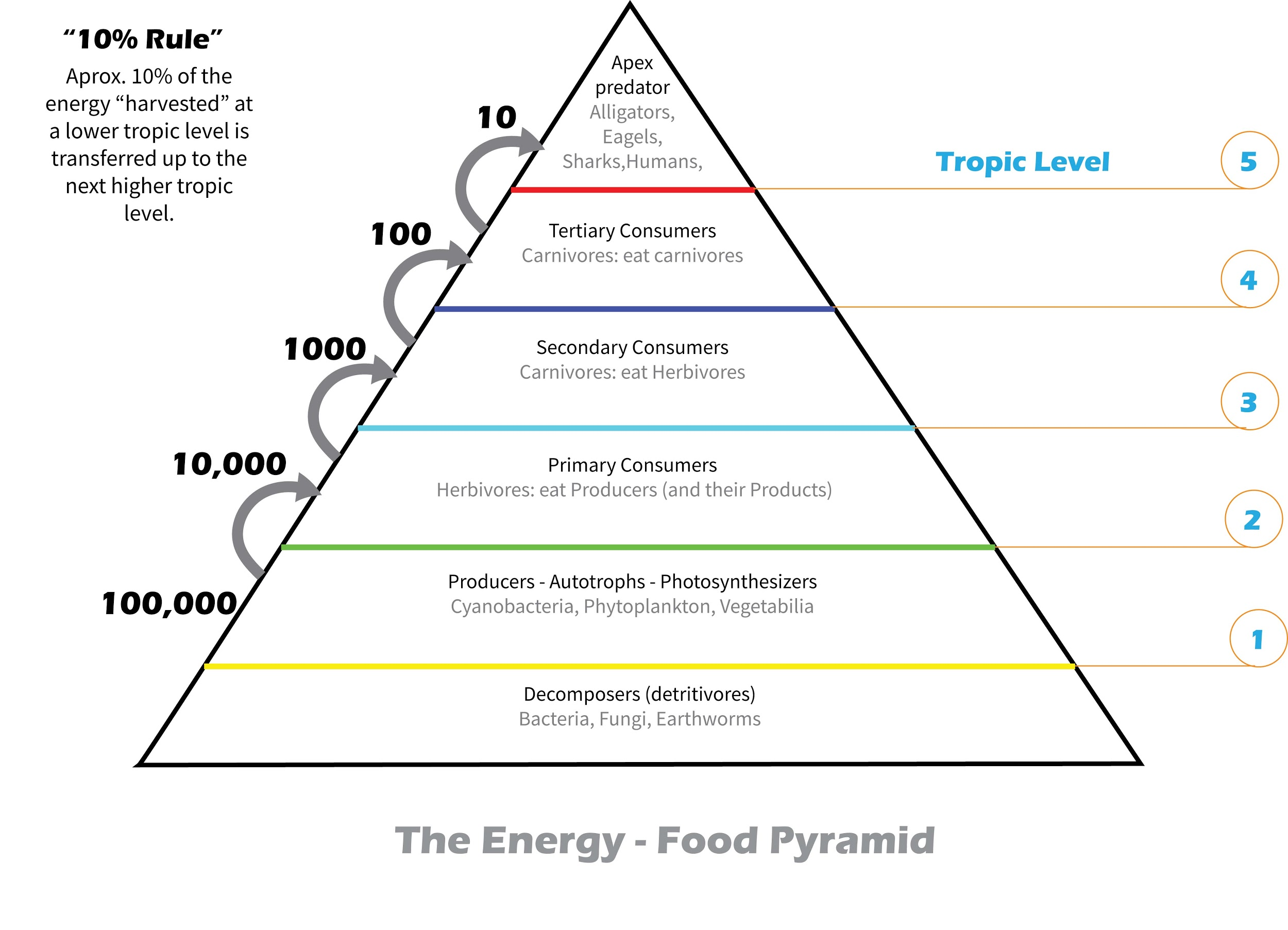Trophic Levels
Trophic levels may be defined as the steps in a food chain at which transfer of food energy takes place. The number of trophic levels is equal to the number of steps in a food chain.
The various trophic levels in a food chain are:
- Producers or plants which constitute the first trophic level.
- Herbivores that constitute the second trophic level.
- Carnivores that feed on herbivores constitute the third trophic level.
- Top carnivores that eat the small carnivores constitute the fourth trophic level.
- Decomposers form the last or detritus trophic level.
Examples of Trophic Levels
The trophic levels in various food chains can be understood by following examples:
This food chain involves three trophic levels. Grass represent the first trophic level. Deer represents the second trophic level and lion represents the third trophic level. |
In this food chain there are four trophic levels. Grass forms the first trophic level and the hawk forms the last or fourth trophic level. Frog and snake form the intermediate trophic levels. |
In this food chain involving man, there are three trophic levels. Here plants represent the first trophic level, goat the second trophic level and man forms the third trophic level. |
 Figure X-1 Diagram showing the various trophic levels in a food chain.
Figure X-1 Diagram showing the various trophic levels in a food chain.
|
Limited Number of Trophic Levels in a Food Chain
A large portion of energy is lost at each trophic level in a food chain. This is because a major part of energy is used in sustaining the life activities of the organisms at that level and is lost as heat.
This results in lesser amount of energy being passed on by the organisms at one trophic level to the next trophic level. This is why the number of trophic levels in a food chain is limited.
As the number of trophic levels in a food chain increases, the organisms at the extreme right side of the food chain receive least amount of energy. This limits the number of trophic levels or steps in a food chain to five or six.
This can be explained like this. On moving from left to right in a food chain, there is a rapid decrease in energy transfer at each step of trophic level making it negligible after the fifth step. Therefore, the food chains having more than five trophic levels are not viable because the energy available after the fifth step will not be sufficient to sustain the life of organisms higher than the fifth trophic level.
Organisms of one trophic level have the same food habit but may have several food resources like leaves, seeds, fleshy fruits, grasses, etc. Thus, a group of species belonging to a trophic level which consumes a common resource base is known as guild, e.g., nectar feeding birds, grazing animals and frugivorous animals.
Thus an ecosystem has a limited number of trophic levels because:
- There is loss of food energy at each transfer.
- Food is not completely utilized by the organisms of a trophic level. Some part of the food goes waste.
- A large amount of energy is used in respiration.
You might also study:

